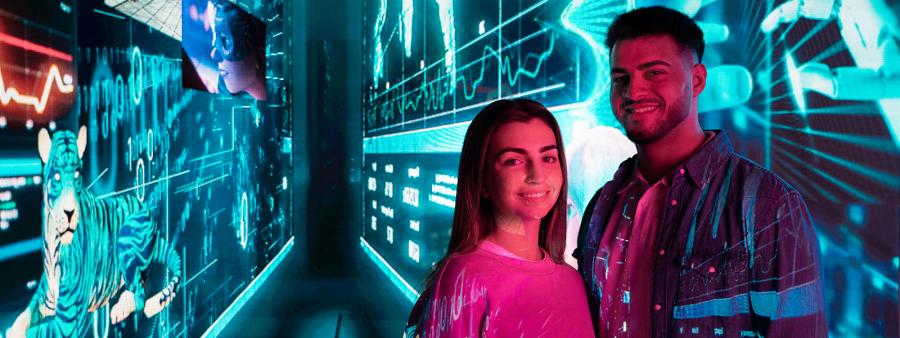Digital animation | From concept to screen

From the first sketches in sketchbooks to the detailed scenes we see on screens, this art has come a long and fascinating way. In this article, we will explore the digital animation process, the latest trends and how technology is shaping the future of digital art.
The Creation Process of Digital Animation
Digital animation is an ever-evolving art form that combines the creativity of animators with the latest software and hardware technologies. But how do you transform an idea into an animation that audiences can enjoy?
Conceptualization and Character Design
It all starts with an idea or story. Animators and concept artists sketch and design characters and settings, defining the key visual elements that will bring the animation to life.
Modeling and Texturing
Once the designs are ready, 3D modeling artists use specialized software to create digital models in 3D. These models are then textured to give them a more realistic look, adding details such as color, shadows and textures.
Rigging and Animation
The rigging process consists of creating a digital skeleton that will allow the model to be animated. Animators then bring the characters to life through the use of animation techniques, which can include anything from keyframe animation to motion capture.
Rendering and Compositing
Rendering is the process of generating the still image or animation frame from the 3D models. The final scene is then composited by adding visual effects, lighting and other elements to achieve the desired result.
Current Trends in Digital Animation
Digital animation is constantly changing, with new techniques and emerging trends that are defining the future of the industry.
Virtual Reality and Augmented Reality
VR and AR offer ways to experience animation, allowing viewers to immerse themselves in animated worlds in a new way.
Hyper-realistic Animation
With texturing and rendering, animators can create characters and scenery that are almost indistinguishable from reality, opening up new possibilities for storytelling and visual representation.
Use of Artificial Intelligence
AI is beginning to play a role in digital animation, from automated creation of certain animations to optimizing animation workflows.
The Future of Digital Animation
As technology advances, the future of digital animation promises to be even more exciting. The boundaries between the real and the virtual are blurring, and the possibilities for animators and digital artists are virtually limitless.
Technological Innovations
Ongoing innovations in software and hardware are enabling animators to create with greater speed, efficiency and detail. Animation tools are becoming more intuitive and accessible, which means more people can participate in creating animations.
Audience Participation
Interactivity is taking on a greater role, and the audience is no longer a passive viewer. Digital animation is evolving into experiences that allow viewers to influence the narrative and participate in the animated world.
Digital future and related education
Digital animation is a wonderful fusion of art and technology that continues to evolve. With its ability to transform concepts into captivating visual experiences, it's no wonder it continues to be a key player in the entertainment landscape and beyond.
At La Salle Campus Barcelona we have programs related to digital art and animation that train in skills and characteristics to prepare the professionals of tomorrow. Discover the area in Digital Art and Animation and VFX at La Salle-URL and boost your future.

AREA IN ARTS, ANIMATION & MULTIMEDIA | LA SALLE-URL